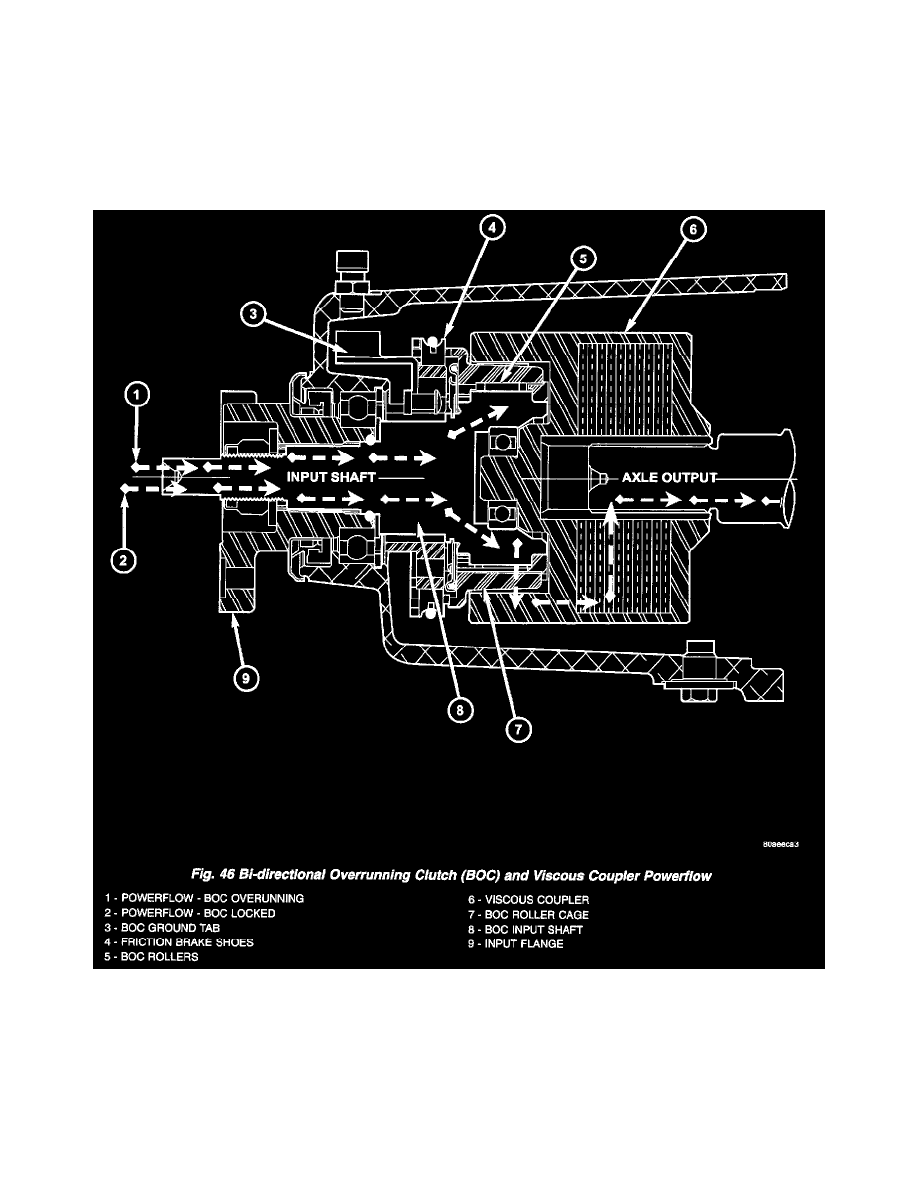Grand Caravan AWD V6-3.8L VIN L (2001)

Viscous Coupling: Description and Operation
VISCOUS COUPLER
DESCRIPTION
The heart of the all-wheel drive system is the interaxle viscous coupling and bi-directional overrunning clutch. Under normal driving the vehicle
retains predominantly front wheel drive characteristics. The all wheel drive takes effect when the front wheels start to slip. Under normal level road,
straight line driving, 100% of the torque is allocated to the front wheels. The viscous coupler allows more torque to the rear wheels in accordance with
the amount of slippage at the front wheels. The variable torque distribution is automatic with no driver inputs required.
OPERATION
The viscous coupler (Fig. 46) is a housing nearly filled with a high046a viscosity silicone liquid and thin metal plates alternately splined to an inner
and outer drum. The viscous coupler provides torque in the following modes:
-
Shear mode (normal operation)
-
Hump mode (locked mode)
The inner plates are slotted around the radius and the outer plates have holes in them. In the shear mode (normal operation), the plates are evenly
spaced and the torque is created by the shearing of the plates through the fluid and 90 - 100% of the torque is applied to the rear axle. During the shear
mode, a fluid flow pattern is created from this design (holes and slots). This fluid flow causes high pressure on each side of each pair of plates and low
pressure between each pair of plates.
When a high speed difference (shear) occurs because of loss of traction (one axle spinning faster than the other), the silicone fluid expands as it heats
